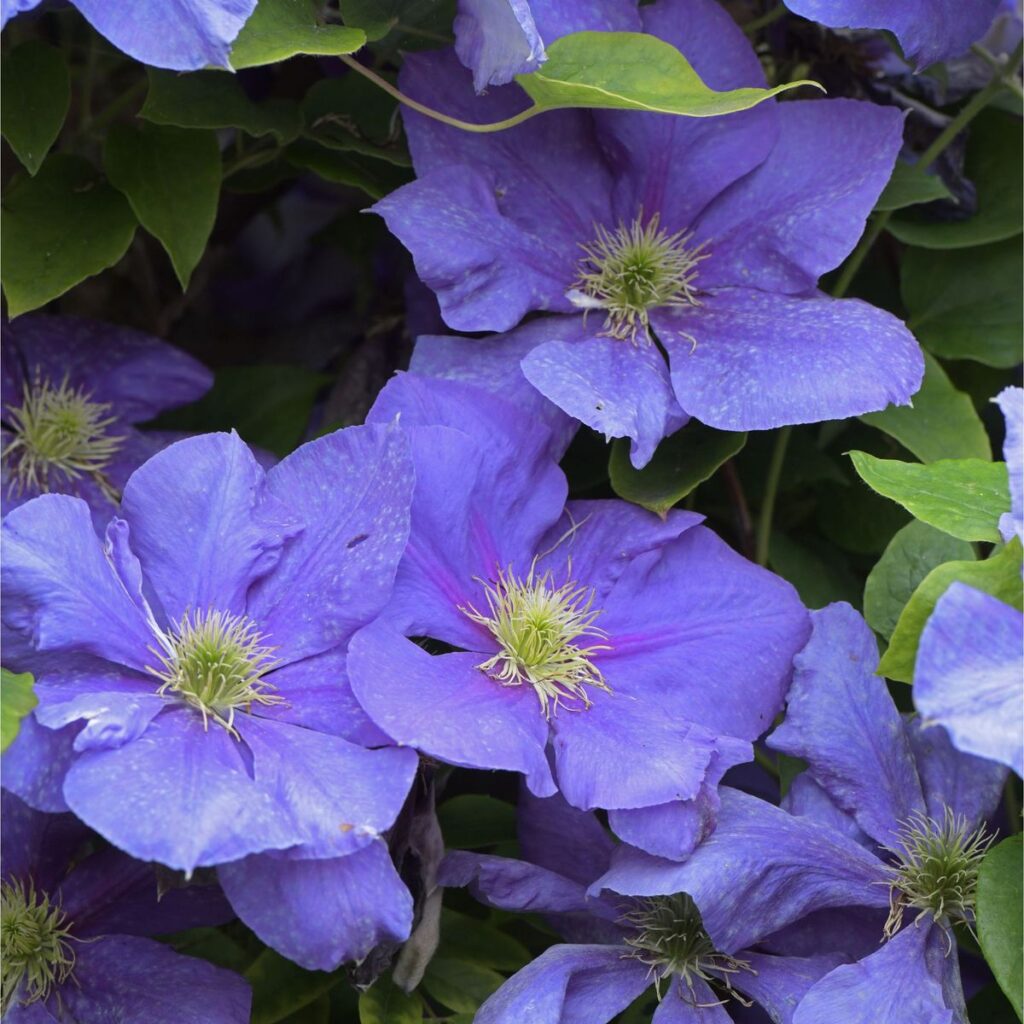Clematis are a gardener’s favourite: they’re prolific bloomers, producing flowers in a spectrum of colours and sizes. But knowing when to prune clematis will encourage the best displays every year.
As one of the fastest-growing climbing plants, many varieties of clematis benefit from annual pruning. But when exactly should you be pruning your plants?
Well, it all depends on the type of clematis you have.
‘When pruning clematis, it’s helpful to categorise them into three distinct pruning groups, based on their flowering time and the age of the flowering wood,’ explains Lynne Lambourne, ambassador for GARDENA.
So, we thought we’d break it down into each group. We’ve even asked garden experts to help us identify which pruning group your clematis falls under so you know exactly when to prune clematis in your garden.
What you’ll need
Gardena Supercut Turquoise Bypass Secateurs
Town & Country Master Gardener Ladies Gloves
When to prune clematis in pruning group one
First up, we’re focusing on pruning group number one. But how can you tell if your clematis belongs to this category?
‘If your clematis flowers in winter or spring, it falls under pruning group one,’ explains Lynne.
So, winter and spring bloomers are what we’re talking about here. The good news is that clematis in this group need very little maintenance.
‘This type of clematis doesn’t really need to be pruned, but you could lightly trim any stems that look dead in the winter,’ says Mark Dwelly, head gardener at Audley Villages.
‘However, these tend to take care of themselves and bloom from last year’s growth, so they need minimal intervention.’
On the whole, though, you can get away with not pruning clematis in pruning group one.
‘As a general guideline, if it flowers before June, avoid pruning,’ Lynne agrees.
When to prune clematis in pruning group two
Next, we’re looking at clematis in pruning group two. The clue here is the flowers themselves.
‘If your clematis produces large flowers in early summer, it belongs to pruning group two,’ says Lynne.
Like clematis in pruning group one, type two plants don’t need a lot of pruning. But, there are benefits to giving them a trim if you do it at the right time.
‘This type can also be left unpruned, but deadheading immediately after flowering and cutting back to a bud below the spent flower may promote additional blooms,’ Lynne explains.
‘In late winter (February), remove any dead or damaged stems and prune lightly using secateurs, working your way down from the top of each stem until you reach a healthy bud.’
When to prune clematis in pruning group three
That brings us to clematis in pruning group three. Again, you’ll need to look at when your plant flowers to determine whether it belongs to this category.
‘If your clematis blooms later in the summer, typically in July or August, it belongs to pruning group three,’ says Lynne.
This type of clematis tends to respond well to hard pruning.
‘Type three clematis benefits from cutting the stems back quite drastically in late winter or early spring, so around February or March,’ explains Mark. ‘These grow best from new wood, so it’s important to trim them by about 30-40cm to promote healthy new flowers.’
If you’re hoping to grow more vigorous plants, you can be a little strategic with your pruning technique. ‘You can leave one or two stems unpruned to encourage flowers at varying heights,’ says Lynne.
FAQs
What happens if you prune a clematis at the wrong time?
Knowing when to prune clematis is essential if you want your plant to flower well every year. Pruning at the wrong time could remove vital buds which would have turned into flowers, meaning you’ll see little to no flowers during their blooming period.
Should you deadhead clematis?
Wondering whether you should deadhead clematis? Absolutely – in fact, deadheading can promote better flowering and even lead to a second flush of flowers.
Make sure you know which pruning group your clematis belongs to before you take out the secateurs – that way, you’ll get the best out of the blooms each year.
Read the full article here
